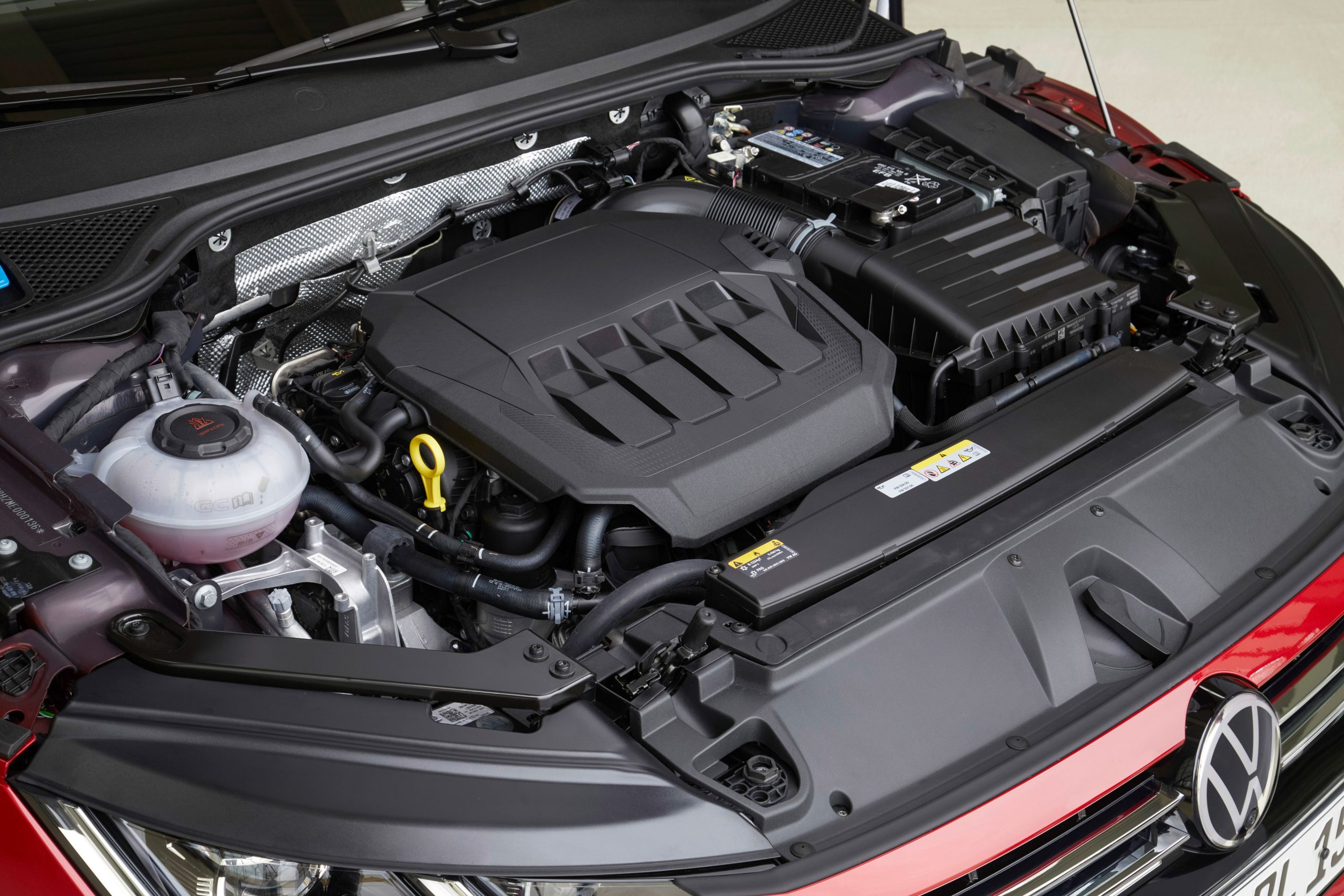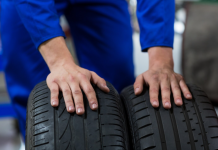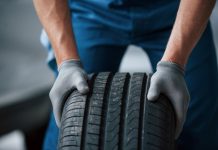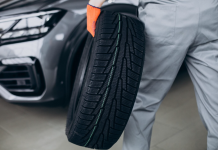
The updated Arteon and Arteon Shooting Brake range will be offered with three turbocharged petrol (TSI), twin turbo diesel (TDI) and one plug-in hybrid (eHybrid) versions. maximum power is 140 kW (190 hp) and 206 kW (280 hp) and from this spring the TSI R version engine will offer 235 kW (320 hp). The eHybrid variant uses a TSI with a maximum output of 115 kW (156 hp), which is complemented by an 85 kW (115 hp) traction motor. The TDI diesel units are available in 110 kW (150 hp) and 147 kW (200 hp) versions. All engines feature high energy efficiency, low emissions and high torque.
Arteon eHybrid with plug-in hybrid drive
Fully electric drive for daily commuting. Arteon eHybrid and ArteonShooting Brake eHybrid have a top speed of 222 km/h and combine the advantages of electric mobility with the capabilities of a long-distance vehicle, one of the most efficient models in the business class. Both versions of the eHybrid allow most customers to cover normal daily distances using all-electric power. The Arteon eHybrid and Arteon Shooting Brake eHybrid plug-in hybrid drive delivers a maximum system output of 160 kW (218 hp) and a total maximum torque of 400 Nm. The traction motor is integrated into a compact overall module along with a specially designed 6-speed DSG Dual Clutch Transmission (DQ400e) for this application, which in turn directly connected to the TSI engine located in front. The new plug-in hybrid versions of the Arteon use front-wheel drive and offer three different hybrid driving modes — E-MODE (all-electric propulsion), Hybrid (automatic switching between electric motor and TSI engine) and GTE (sports driving mode using the system’s full power).
No local emissions at start-up. The plug-in hybrid concept is designed so that the ArteoneHybrid and Arteon Shooting Brake eHybrid start and run in all-electric E-MODE when there is sufficient battery charge (except for the case with a battery temperature of 10°C). Thanks to a relatively large battery with an energy capacity of 13 kWh, the combined all-electric traction range in accordance with the WLTP requirements reaches 59 kilometers in the Fastback version and up to 57 kilometers in the Shooting Brake. This means that many consumers can cover average daily trips using all electricity and reduce local emissions. The maximum speed of the Arteon hybrid versions in all-electric E-MODE is up to 130 km/h — when this is exceeded, Fastback and Shooting Brake automatically switch to hybrid mode. power in hybrid mode, as the electric motor fills this role. booster peak loads. Both versions of the eHybrid perform the classic sprint from 0 to 100 km/h in just 7.8 seconds. The driver can manually switch to all-electric mode at any time using the E-MODE direct access button to the left of the DSG shift lever in the center. console or from the touch screen of the infotainment system.
No local emissions upon arrival. With the ability to customize the hybrid driving mode, the eHybrid system can store enough electricity in the battery for long trips and thus enable the last kilometers of the final destination in an urban environment. … It is enough for the driver at the beginning of the journey to simply enter into the win-win battle system the percentage of battery charge that must be saved. It is not necessary to fully charge the battery for this purpose, as this can also happen on the road from the TSI engine and the excess energy recovery system when decelerating and braking. To charge the battery of the Arteon eHybrid and Arteon Shooting Brake eHybrid on the go, the rider can open the Drive Mode menu where E-MODE and Hybrid are located in the center at the top level for selection. When hybrid mode is selected, the screen displays a graphical image of the battery, divided into ten scales (from 0 to 100%), displaying a visual current level of charge. The driver can intuitively and easily track this level by the number of illuminated blue light segments. Next to the battery table there is a symbol with a stylized gear, touching which opens the manual settings of the hybrid mode, in which the driver has the opportunity to maintain a constant battery charge (via the equal sign «=»), increase it (up arrow) or lower a certain level (down arrow) in 20% increments.
GTE sport mode. The GTE mode offers an extremely high level of driving dynamics. This mode is activated using the direct access button located to the right of the DSG gear lever. In GTE mode, the traction motor and TSI motor combine to deliver maximum system power at the touch of a button.
Preventive hybrid strategy
The intelligent software and hardware of the new versions of the eHybrid Arteon helps to reduce energy consumption and increase autonomous power consumption. When the navigation system is in active reverse mode, the driver can use the hybrid’s intelligent preventive control strategy to optimize autonomous mileage. To do this, the route calculation includes the terrain, profile and topography of the upcoming section based on cartographic and GPS data in order to find the optimal ratio of the energy consumption of movement — for example, by slowing down in time before turns. and appropriate use of recuperation for maximum energy savings.
Charging from the network. The Arteon eHybrid and Arteon Shooting Brake eHybrid batteries are normally fully charged from an external power supply/charging station. To do this, use the boom loading clutch located in the front fender on the driver’s side. Depending on the power source, the battery can be charged with 2.3 kW or 3.6 kW AC power. The built-in charger controls the charging process fully automatically — all the driver has to do is connect the charging cable to the car. As already mentioned, the driver can program and control charging times and periods via the infotainment system (via the so-called «e-manager») or via the We Connect app on a smartphone in order to get more economical electricity after hours. , For example.
TSI — high-tech gasoline engines
2.0 TSI with 140 kW (190 hp). The 1984 cc turbocharged petrol engine develops a maximum output of 140 kW (190 hp) and uses a so-called B-cycle combustion process that improves efficiency by up to 10%. The results are noticeable — lower fuel consumption and lower emissions levels, as well as high torque figures at lower speeds (320 Nm between 1500 and 4180 rpm). This is how the B cycle combustion process works — the 2.0 TSI intake valves stay open for a shorter period of time compared to other gasoline engines as they close during the filling stroke while the piston is still moving. and must walk a certain distance to the lower corpse. As a result, the fresh fuel mixture can expand more, than a cylinder, which in turn leads to a decrease in pressure and temperature in the mixture. On this basis, a number of positive effects are achieved, including an increase in the compression ratio to 12.2:1 and a direct increase in engine efficiency, resulting in a reduction in both fuel consumption and carbon dioxide emissions. The potential for realizing benefits in terms of fuel consumption is extremely high in the medium engine speed range (part load).
2.0 TSI with 206 kW (280 hp). The top TSI engine in the range is available as standard with a 7-speed DSG transmission with clutch and dual transmission system. The 1984 cc direct injection engine and 1984 cc turbocharged system develops a maximum output of 206 kW (280 hp) from 5600 to 6500 rpm and provides excellent comfort and agility on the road. An impressive maximum torque of 350 Nm is achieved from 1700 to 5600 rpm.
TDI engines — economy business class
Market premiere with two TDI engines. The four-cylinder TDI engines with a maximum output of 110 kW (150 hp) and 147 kW (200 hp) are extremely economical. The combined fuel consumption of the Arteon 2.0TDI is 150 hp. for example, it is only 4.0L/100km (NEDC) and measured according to the requirements of the new WLTP cycle, the combined consumption is 4.8L/100km. With this consumption, according to WLTP, the theoretical autonomous range of the model reaches 1375 km. when filling one tank 66 liters. According to the study Mobility Germany (MiD) 1 published by the Federal Ministry of Transport and Digital Infrastructure, the average annual car mileage in Germany, Europe’s most populous country, is 14,700 kilometers. On average, this means that the owners of Arteon 2. 0 TDI could visit the gas station less than once a month. Assuming a diesel price in Germany of €1.062 per litre, the fuel consumption of this Volkswagen model is only €5.103 per 100 kilometres. Even the combined consumption of the Arteon 2.0 TDI version with a maximum power of 200 hp. and top speed up to 237 km/h is just 4.6 l/100 km (NEDC) or 5.2 l/100 km (WLTP) and WLTP autonomous mileage is 1269 km.
Double dosing. Thanks to the use of dual dosing technology and an exhaust gas treatment system with two SCR (Selective Catalytic Reduction) catalysts, each with a separate AdBlue urea injection system, the amount of nitrous oxide emissions in TD versions Current RDE measurements (Real Driving Emissions) emission levels in real conditions tests conducted by independent UK measurement and testing company Emissions Analytics show that the 200 hp Arteon ShootingBrake 2.0 TDI emits four times less nitrogen oxide emissions, the 80 mg/km NOx limit set by the European Union. This is how dual dosing technology works — AdBlue additive is injected into the exhaust stream selectively through two exhaust systems connected in series with an SCR catalytic converter Timely reduction of NOx emissions. Its close proximity to the engine exhaust manifold is advantageous and enables low load driving. Volkswagen engineers have integrated a second SCR catalytic converter into the lower body of the Arteon, and because the distance to the engine is greater, the exhaust gas temperature can be up to 100°C cooler. As a result, this SCR catalyst performs particularly well in high-load applications such as high-speed driving or trailer towing. Thus, double dosing of the AdBlue additive ensures that
Nitrogen oxides (NOx) are converted into harmless nitrogen and water. The AdBlue additive is an aqueous solution of synthetic urea (urea) that is sprayed into the exhaust stream at the inlet of each of the two SCR catalysts to form ammonia. As a result of the chemical process catalyzed by catalysts, the interaction of ammonia with nitrogen oxides contained in gases becomes two harmless components — gaseous nitrogen and water vapor. The increased efficiency of the dosing and injection process has allowed the AdBlue additive cost to remain at the current level depending on the dual injection.









